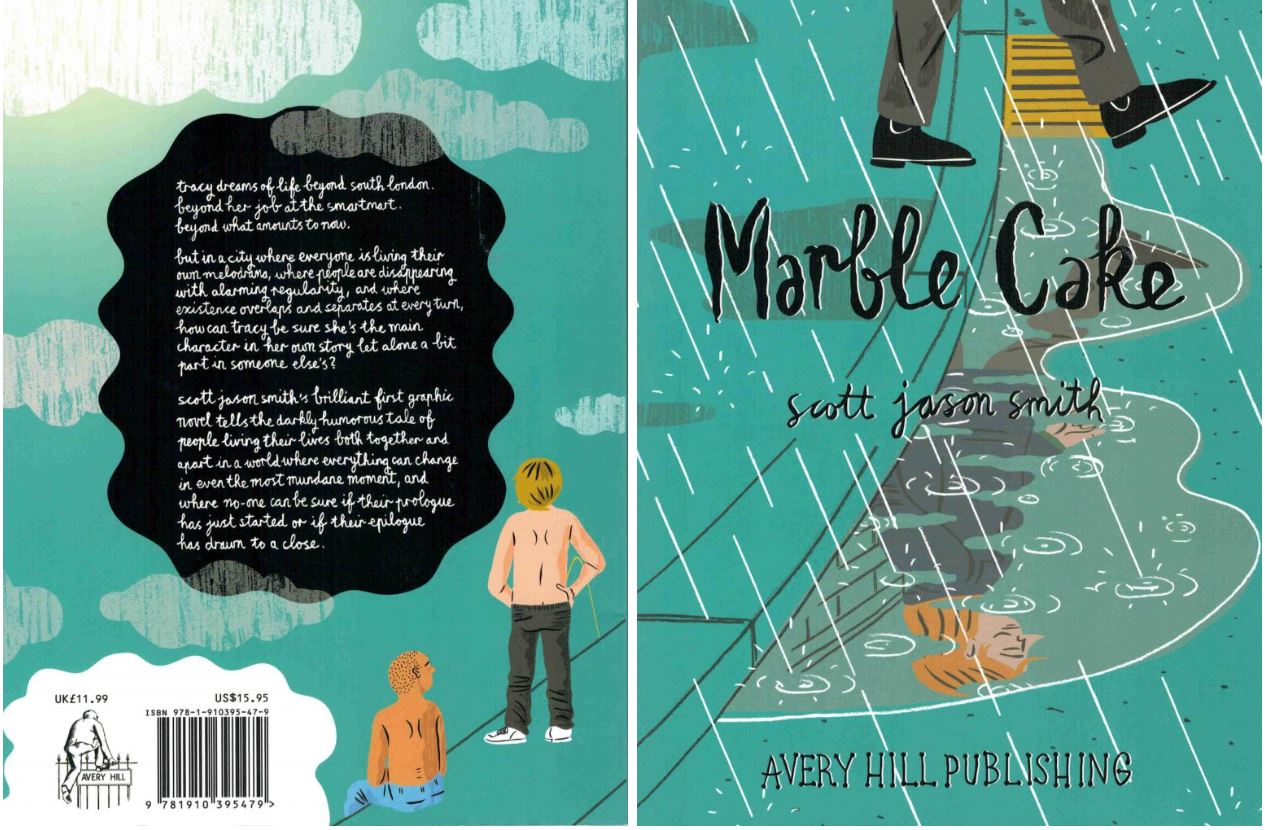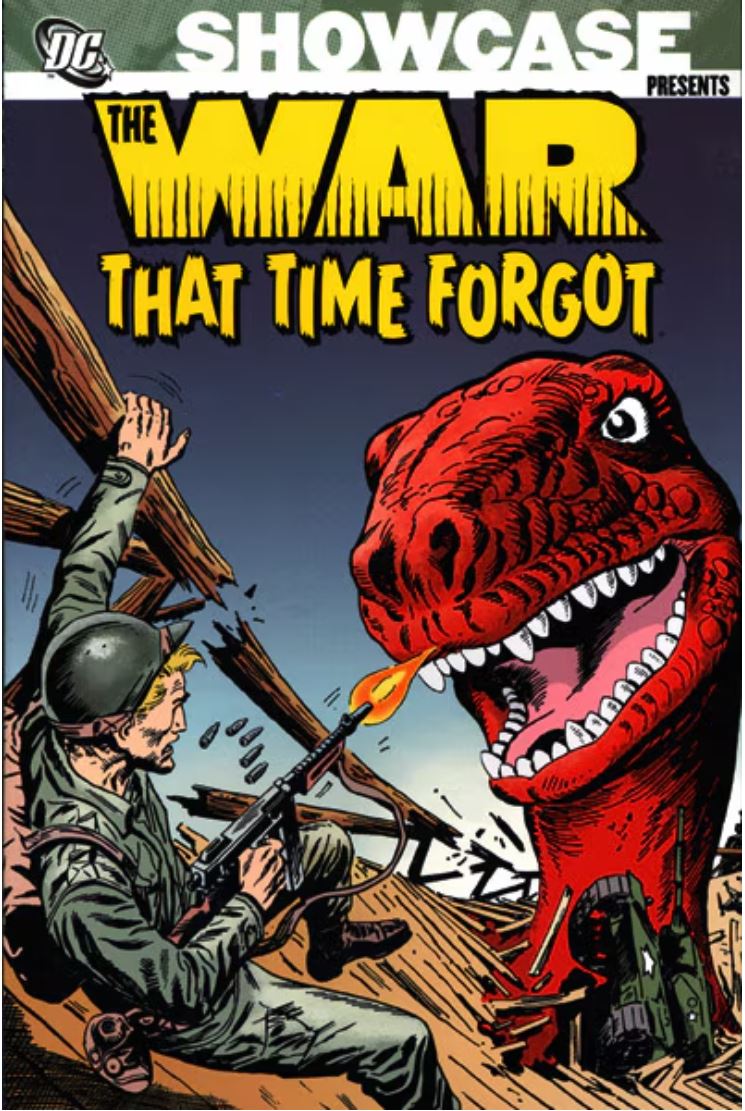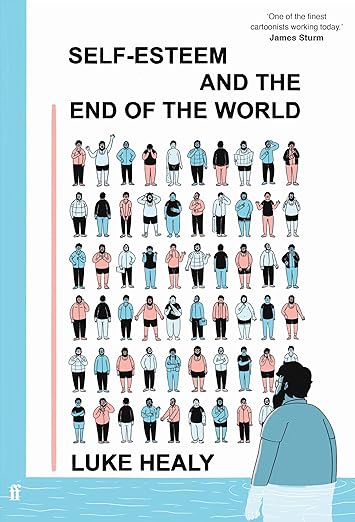
By Franquin, translated by Jerome Saincantin (Cinebook)
ISBN: 978-1-80044-021-0 (PB Album/Digital edition)
Like so much else in Franco-Belgian comics, it all started with Le Journal de Spirou, which debuted on April 2nd 1938, with its iconic lead strip created by François Robert Velter AKA Rob-Vel. In 1943, publisher Dupuis purchased all rights to the comic and its titular star, and comic-strip prodigy Joseph Gillain (Jijé) took the helm for the redheaded kid’s further exploits as the magazine gradually became a cornerstone of European culture.
In 1946, Jijé’s assistant André Franquin was handed creative control and slowly abandoned short gag vignettes in favour of extended adventure serials. Franquin introduced a broad, engaging cast of regulars and created the phenomenally popular Marsupilami. Debuting in 1952 (Spirou et les héritiers) the beast became a spin-off star of screen, plush toy stores, console games and albums in his own right. Franquin continued crafting increasingly fantastic tales and absorbing Spirou sagas until his resignation in 1969. He was born in Etterbeek, Belgium on January 3rd 1924. Drawing from an early age, the lad only began formal art training at École Saint-Luc in 1943. When WWII forced the school’s closure a year later, he found work at Compagnie Belge d’Animation in Brussels and met Maurice de Bévére (Lucky Luke creator “Morris”), Pierre Culliford (Peyo, creator of The Smurfs and Benny Breakiron) and Eddy Paape (Valhardi, Luc Orient). In 1945 all but Peyo signed on with Dupuis, and Franquin began his career as a jobbing cartoonist and illustrator, producing covers for Le Moustique and scouting magazine Plein Jeu.
During those early days, Franquin and Morris were being tutored by Jijé, who was the main illustrator at LJdS. He turned the youngsters – and fellow neophyte Willy Maltaite (AKA “Will” – Tif et Tondu, Isabelle, Le jardin des désirs) – into a smoothly functioning creative team known as La bande des quatre or “Gang of Four”. They ultimately revolutionised and reshaped Belgian comics with their prolific and engaging “Marcinelle school” graphic style.
Over two decades he had enlarged Spirou & Fantasio’s scope and horizons, until it became purely his own. Constantly, fans met startling new characters as the strip evolved into the saga of globetrotting journalists who visited exotic places, exposed crimes, explored the incredible and clashed with bizarre and exotic arch-enemies. Throughout it all, Fantasio remained a full-fledged – albeit entirely fictional – reporter for Le Journal de Spirou: regularly popping back to the office between cases. Sadly, lurking there was an arrogant, accident-prone, junior tasked with minor jobs and general dogs-bodying. He was Gaston Lagaffe – Franquin’s other immortal invention…
There’s a hallowed tradition of comics personalising fictitiously mysterious creatives and the arcane processes they indulge in, whether it’s Marvel’s Bullpen or DC Thomson’s lugubrious Editor and underlings at The Beano and Dandy – it’s a truly international practise. At first cameos in Spirou yarns and occasional asides on text pages featured well-meaning foul-up and ostensible office gofer “Gaston” who debuted in issue #985, cover-dated February 28th 1957. The affable conniving dimwit grew to be one of the most popular and perennial components of the comic, whether as guest in Spirou’s adventurous comics cases or his own comedy strips and faux reports on the editorial pages he was supposed to paste up.
In terms of actual schtick and delivery, older readers will recognise favourite beats and timeless elements of well-intentioned self-delusion as seen in Benny Hill and Jacques Tati and recognise recurring riffs from Some Mothers Do Have ’Em and Mr Bean. It’s slapstick, paralysing puns, infernal ingenuity and inspired invention, all to mug smugness, puncture pomposity, lampoon the status quoi? (there’s some of that punning there see?) and ensure no good deed going noticed, rewarded or unpunished…
As previously stated, Gaston/Gomer obtains a regular salary (let’s not dignify what he does as “earning” a living) from Spirou’s editorial offices: reporting to top journalist Fantasio, or complicating the lives of office manager Léon Prunelle and the other, more diligent, staffers, whilst effectively ignoring those minor jobs he’s paid to handle. These include page paste-up, posting (initially fragile) packages and editing readers’ letters… and that’s the official reason fans’ requests and suggestions are never acknowledged or answered…
Gomer is lazy, over-opinionated, ever-ravenous, impetuous, underfed, forgetful and eternally hungry, a passionate sports fan and animal lover, with his most manic moments all stemming from cutting work corners and stashing or consuming contraband nosh in the office. This leads to constant clashes with colleagues and draws in seemingly notionally unaffiliated bystanders like traffic cop Longsnoot and fireman Captain Morwater, as well as many simple passers-by who should know by now to keep away from this street.
Through it all our office oaf remains eternally affable, easy-going and incorrigible. Only three questions really matter here: why everyone keeps giving him one last chance, what can gentle, lovelorn Miss Jeanne possible see in the self-opinionated idiot, and will ever-outraged capitalist financier De Mesmaeker ever get his perennial, pestiferous contracts signed?
In 1972 Gaston – Le géant de la gaffe became the 10th European album and in 2021 was Cinebook’s 8th translated compilation: again focussing on non-stop, all-Franquin comics gags in single-page bursts. Our well-meaning, overconfident, overly-helpful know-it-all office hindrance invents more stuff making life unnecessarily dangerous and continues his pioneering and perilous attempts to befriend and boost fauna and flora alike and improve the modern mechanised world…
Despite resolute green credentials and leanings, Gomer is colour-blind to the problems his antiquated automobile causes, even after numerous attempts to soup up, cleanse, and modify and mollify the motorised atrocity he calls his car. The decrepit, dilapidated Fiat 509 is more in need of merciful execution than his many well-meant engineering interventions as seen here in a range of cold weather exploits proving the indomitable optimism of office editor Léon Prunelle who really should know by now the cost of accepting lifts from his incorrigible subordinate… especially in light of Gomer’s pioneering seat belt invention and obsession with solving road pollution.
…And when not actually the cause of automotive disasters, Gomer’s car attracts the Ahab-like attentions of increasingly obsessed traffic cop Longsnoot…
At the office, work avoidance is masked as “improving” perfectly functional equipment, speeding up these newfangled copiers, printers and the like, but his monorail messaging system – adjusted to average head height – proves to be the next best thing in concussion causation…
One evergreen strand of anarchic potential is a subgenre of strips involving “guest-shots” by other LJdS stars. Previously falling foul of the fool were creators such as Lambil (Bluecoats) and Roba (Billy & Buddy), and here the gofer’s disturbing tendency to don mascot costumes and paying heavily for it continues as Gomer garbs himself as (cartoonist Charles DeGotte’s) big yellow bird The Flagada and rapidly regrets it…
Just as much fun if not actually safer are the feral creatures Gomer’s big heart compels him to adopt. These include a sassily savage alley cat and nastily nefarious black-headed gull to accompany illicit studio companions Cheese the mouse and goldfish Bubelle.
Here the combined critter chaos factor repeatedly lands the oaf in hot water… and swamp mud and potholes and wild woodland paths and rooftops and… Gomer almost adds a skunk to the menagerie before animal instinct and nature convince him otherwise…
However, their hyperactive gluttonous presences are as nothing compared to the spiky depredations of a rapidly mutating cactus Gomer rescued from his Aunt Hortense’s home and which is increasingly dominating the Spirou offices. It doesn’t fit there either, but at least has plenty of fresh victims to puncture and terrify. When he also introduces Hortense’s creeper, it soon becomes a case for applying the un-soothing, discomforting tones of his manic musical WMD the Brontosaurophone…
Heavily featured are episodes of (imagined) sporting glory, dalliances with fishing and clay pigeon shooting plus an extended run of strips with Gomer and opposite number Jules-from-Smith’s-across-the-street seeking to smuggle a radio into work to follow the football. Old habits die hard however and there are still moments of culinary catastrophe and inventive debacle – like when he beefs up the office chainsaw or creates tomato soup gas…
The holidays and Year’s End festivities offer their own hazards, generating much mayhem but still prevent benighted business bod De Mesmaeker getting an even break whenever he brings contracts for poor Prunelle to sign.
Far better enjoyed than described, these strips let Franquin flex his sardonically whimsical creative muscles and subversively propound his views on environmentalism, pacifism and animal rights. These gags are sublime examples of all-ages comedy: wholesome, barbed, daft and incrementally funnier with each re-reading.
So… fancy a bit of Goofing off yet?
© Dupuis, Dargaud-Lombard s.a. 2009 by Franquin. All rights reserved. English translation © 2021 Cinebook Ltd.
















